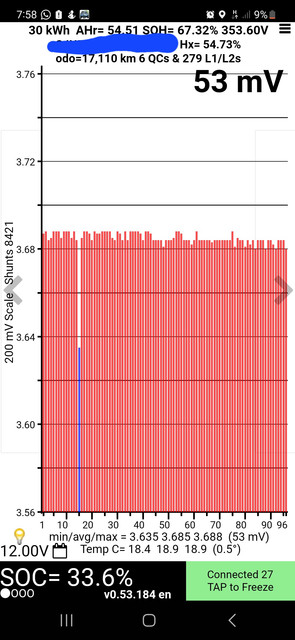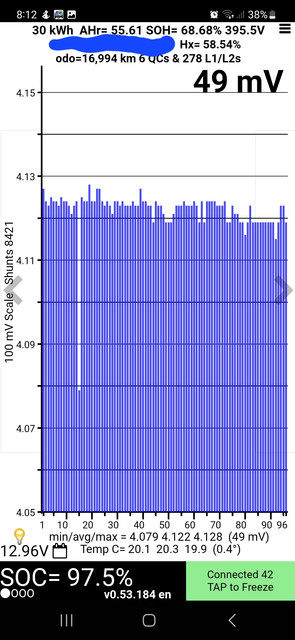We just got a good deal on a used leaf with very low mileage. Previous owner left it abandoned in a garage for a year and one of the cells seems to have self-discharged more than the rest and is now sitting at 50mV lower than the rest of the pack.
I've tested at full charge and at 25% indicated (actually 33%SOC on leafspy) and it always remains 50mV below the rest. To me this implies that the capacity is still there, it just needs to be synchronised with the rest of the pack.
We did a range test on the pack, from 100% to 25% on the car's display took 116km of driving so the capacity seems to be there - I just wish to correct the imbalance for peace of mind.
Is there any way to do that? The cell didn't balance much on its first full charge.
Leafspy screenshots below, at discharged and full states.


I've tested at full charge and at 25% indicated (actually 33%SOC on leafspy) and it always remains 50mV below the rest. To me this implies that the capacity is still there, it just needs to be synchronised with the rest of the pack.
We did a range test on the pack, from 100% to 25% on the car's display took 116km of driving so the capacity seems to be there - I just wish to correct the imbalance for peace of mind.
Is there any way to do that? The cell didn't balance much on its first full charge.
Leafspy screenshots below, at discharged and full states.


